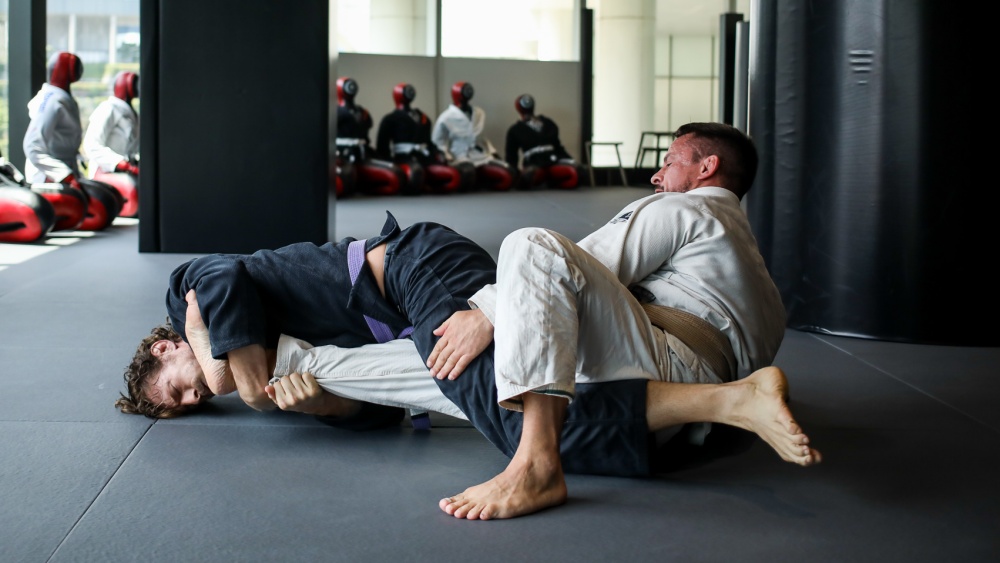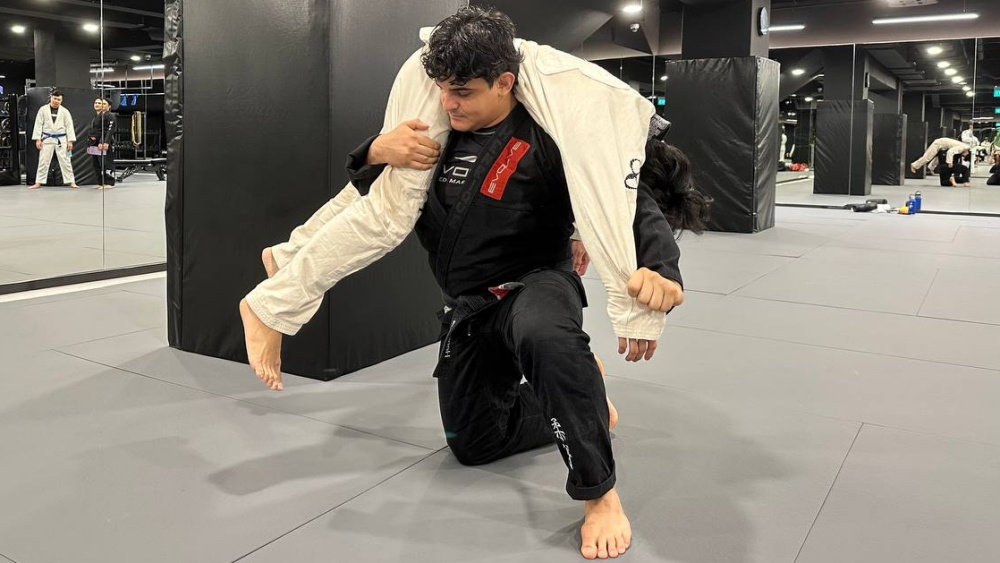The kneebar is one of the fundamental techniques in Brazilian Jiu-Jitsu. It is a leg-based attack that aims to apply pressure on the knee joint by pushing on the opposite side of the knee and pulling the leg to hyperextend the limb.
The perception of leg attacks in BJJ has seen a lot of transformation over the years. From what was thought of as a cheap way to win a few decades back, it has evolved to a primary attacking position and has yielded excellent results for many modern athletes. Today we’ll discuss the kneebar and how it’s applied in BJJ.
The Kneebar Explained
The kneebar is applied similarly to an armbar. Applying force to where the knee does not usually go inflicts incredible pressure on the joint and can cause damage if not attended to.
The kneebar is a versatile submission because you don’t even have to get the tap for it to be effective. If you want to sweep your opponent, you will need to make sure that your leg is locked out behind their knee so they cannot escape; you can use your bodyweight to twist it from underneath. If you want pressure applied on their joint, then come up higher on their leg and pull hard with one arm wrapped around their shin while using your other arm as leverage by pushing down on the back of their thigh.
Finishing the kneebar can be done from many positions. You can finish it in a similar manner to the armbar, where you pinch your knees and isolate the limb while extending your hip forward. This can be done with your back/hip on the mat or from a belly-down position. Another option is to scoop the leg towards your armpit and extend the hip like previously mentioned.
It is important to note that a key element to a strong kneebar is your hip placement in relation to your opponent’s. A strong bite comes from using your hip as a fulcrum so the leg can have restricted space to move. Your opponent’s knees should be locked tight as a slight misalignment can mean success or failure in applying the submission. Therefore, it is critical to pinch the knees when using the kneebar so that the opponent’s leg is kept straight at all times.
Why Were Leg Locks Frowned Upon?
A common struggle for beginner and intermediate grapplers is knowing when and where to attack the kneebar. This is one of the reasons why leg attacks were considered inferior to other forms of limb submissions – arm attacks such as the armbar and kimura typically start from the guard or a pin, which gives the attacker a neutral or dominant positional advantage from the start.
Leg locks, on the other hand (especially back in the ’90s), usually came from scrambles and were treated as last-ditch efforts to get the tap. And because of this, leg locks, in general, were not seen as technical compared to the other joint locks in BJJ.
The main problem of leg attacks was not the techniques themselves; it was the lack of positional work where the leg can be isolated to create threats for attacks, sweeps, and transitions.
Evolution Of The Leg Game
The evolution of leg attacks in Brazilian Jiu-Jitsu progressed much slower due to its image in the 90s. While many innovators heavily contributed to its development, the most influential of all would be John Danaher, a black belt under the legendary Renzo Gracie. John Danaher is known for his systematic approach to grappling and has coached many world-class athletes like Georges St-Pierre, Chris Weidman, Garry Tonon, Gordon and Nicky Ryan, and Nicky Rodriguez.
Danaher’s approach is so practical because of his focus on leg locks’ positional and breaking aspects. He pioneered a hierarchy of leg positions (ashi garami) where the goal is to isolate the leg and make it vulnerable to attacks. He also is a heavy believer in creating dilemmas where threats can come from many different positions. This overloading approach creates many opportunities for attacks and can be highly effective if the opponent has no idea of the common defenses.
Adding The Kneebar To Your Game
The kneebar is one of the strongest leg submissions in all of BJJ and can be used in submission grappling and mixed martial arts. Knowing the kneebar can create situations where other leg-based submissions can be applied, such as the toe hold, straight ankle lock, and heel hook. Alternatively, you can start from other leg attacks first to then transition to the kneebar if it’s your best attack from the position.
Building a solid leg game requires years of dedicated drilling and application in sparring. The ashi garami position can be difficult at first because you usually start from the bottom like many guards in BJJ. As with all things in grappling, it will become second nature the more you work on it every day. You’ll be surprised at how natural it can be after months of dedicated practice!
Final Thoughts
Dean Lister, a former UFC fighter and ADCC Champion, famously asked John Danaher, “Why would you ignore 50 percent of the human body?”. This is a question that any aspiring athlete should think about. The modern meta of Brazilian Jiu-Jitsu has evolved into a series of highly dynamic attacks and defenses coming from both top and bottom positions. Gone are the days where focusing on only a few moves can mean success in top-level competition. If you plan on becoming the best grappler you can be, it is absolutely important to learn attacks from everywhere.
The kneebar is an essential tool to add to your toolbox of techniques. It can be used as a primary submission technique. It can also be used to create movement where you can then transition to better positions. Whatever your grappling style is, learning the kneebar and other leg attacks in Brazilian Jiu-Jitsu can surely make you a more dangerous grappler overall. Try it out, and let us know how it goes!
You may also like:
Guard Passers vs Guard Players: A Guide To Picking Your BJJ Style

















